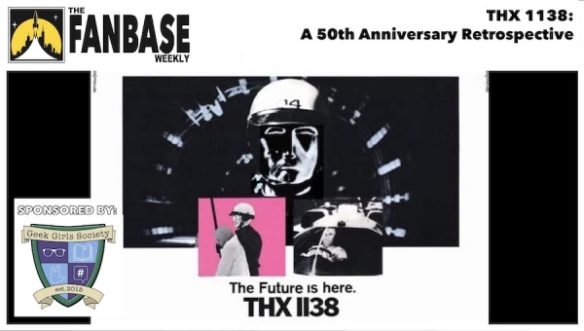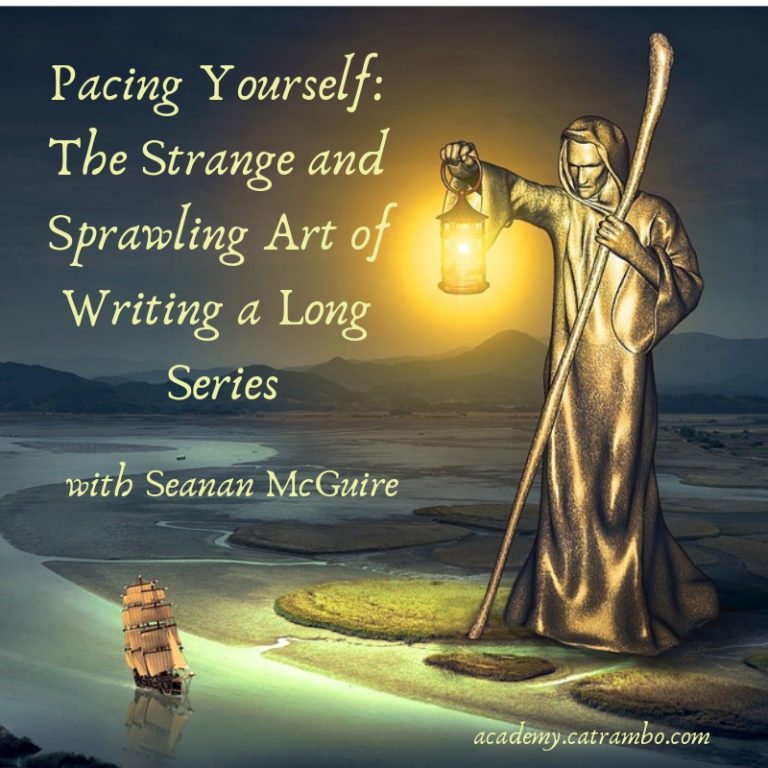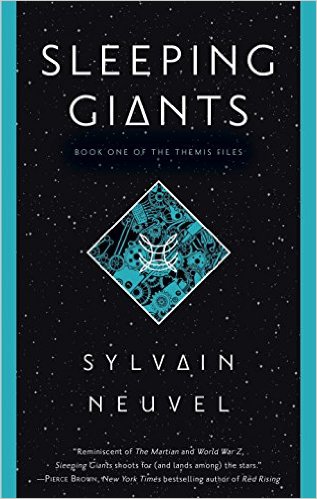(1) DON’T MISS OUT. DisCon III reminds eligible voters they have until March 19 to nominate for the 2021 Hugo Awards.
Members of DisCon III, who registered before 11:59 p.m. PST December 31 2020, and CoNZealand have nominating rights for this year’s Hugos. Check now at https://members.discon3.org/ to make sure that you are in our system. If for some reason you aren’t, we can put that right quickly.
381 people have submitted The Hugo Awards nominations. Are you one of them?

(2) AN EQUATION WHERE 1138 IS 50. The Fanbase Weekly podcast is devoted to a “50th Anniversary Retrospective on ‘THX 1138’ (1971)”.
In this Fanbase Feature, The Fanbase Weekly co-hosts Bryant Dillon and Phillip Kelly (writer, filmmaker, and Fanbase Press Contributor) are joined by special guests Craig Miller (Star Wars Memories, Former Director of Fan Relations at Lucasfilm) and Gavin Hignight (writer – Star Wars: Resistance, Transformers: War for Cybertron) to participate in a thorough discussion regarding THX 1138 (1971) in light of the film’s 50th anniversary, with topics including the timely nature of the film’s themes, what the film reveals about filmmaker George Lucas and his pre-Star Wars ambitions and interests, and more. (Beware: SPOILERS for THX 1138 abound in this panel discussion!)

(3) COULD THERE BE A SEVENTH FOR NUMBER ONE? A.V. Club tells how the late actress could keep a streak alive: “The late Majel Barrett might still voice the computer on Star Trek: Discovery”.
…Earlier this week, the Roddenberry family Twitter account announced that Barrett’s voice had been recorded phonetically before she died, and that the family—including her son, Eugene Roddenberry Jr., an executive producer on CBS’s forthcoming Star Trek: Discovery—was working to synthesize it for potential use on a number of upcoming projects. According to the tweet, those include Apple’s Siri, and possibly even the voice of the Discovery computer.
It’s worth noting, though, that neither CBS, nor showrunner Byran Fuller, have confirmed that there are any plans to use Barrett’s phonemes for the computer’s voice. (Meanwhile, Discovery might already have a nod to Barrett in the form of lead character “Number One,” whose nickname probably references an otherwise-unnamed character Barrett played in the original Star Trek pilot “The Cage.”)
(4) LETTER FROM THE EDITOR. Nightmare Magazine’s Wendy N. Wagner sends a message:
(5) AFROFUTURISM. In “Afrofuturism gaining in popularity as nation wrestles with race” on Axios, Russell Contreras gives an overview of Afrofuturism, including interviews with Sheree Renee Thomas and Maurice Broaddus.
More Black writers and artists are turning to science fiction — and an artistic movement known as Afrofuturism — to tackle issues around race and inequality and give fans an escape from the harsh realities on Earth.
The big picture: Afrofuturism was long an underground movement. Its roots date back to W.E.B. Du Bois, though its name wasn’t coined til the 1990s. But it has been gaining a bigger mainstream profile in recent years with the blockbuster movie “Black Panther” and the HBO series “Lovecraft Country” and a national racial reckoning….
(6) LEE OR DITKO? OR ALL OF THE ABOVE? “Roy Thomas, Former Marvel Editor, Pushes Back on New Stan Lee Biography” in a guest column for The Hollywood Reporter.
Something like 95 percent of the time, Abraham Riesman’s True Believer: The Rise and Fall of Stan Lee is a very good biography. However, the remaining (and crucial) 5 percent of its content, scattered amid all that painstaking research and well-written prose, renders it often untrustworthy… i.e., a very bad biography. Because the author often insists, visibly and intrusively, on putting his verbal thumb on the scales, in a dispute he seems ill-equipped to judge.
As Marvel Comics visionary Stan Lee’s longtime employee and de facto protégé, and as a known student of the history of comic books, I suppose I would be expected to denounce Riesman’s book as scurrilous, a pack of lies.
But it’s both better — and worse — than that.
… That Stan Lee was the co-creator, and not the sole creator, of the key Marvel heroes from the Fantastic Four and Spider-Man through Daredevil and the Silver Surfer can hardly be in dispute at this late stage. I myself, back in the ’80s when I wasn’t working for him, had a friendly argument with him on that score over lunch. I soon realized that, as much as he respected the talents and contributions of artists (Riesman would say “artist/writers” and he’s right, at least in one sense) such as Jack Kirby and Steve Ditko to the characters introduced in the 1960s, he could never really bring himself, in his own mind, to think of them as “co-creators.” The two of us had to agree to disagree, and I never saw any use in bringing it up again.
If I can judge from Riesman’s writings, and from other sources over the years, I’m sure I’d have encountered the same kind of blinders-on stubbornness in Jack Kirby (oft-quoted in this book), who saw Stan as little more than the guy who scribbled a few words of dialogue and rode to unearned glory on his back.
Both men were, I think, wrong, and that’s why Riesman is so ill-advised to use nearly every opportunity he gets to weight things in Jack’s favor and against Stan. (By the way, if someone objects to my referring to Jack Kirby as well by his first name, it’s because the two of us were on a first-name basis from 1965 till the last time we met, sometime in the 1980s. I considered him then, and I consider him now, to be by far the greatest superhero artist in the history of the medium, and, along with Stan, one of its preeminent pop-culture geniuses.)
You think I’m exaggerating when I suggest that Riesman finds gratuitous excuses to favor Jack’s version of things over Stan’s? I’m not….
(7) TODAY’S BIRTHDAYS.
[Compiled by Cat Eldridge and John Hertz.]
- Born February 23, 1886 – Ganpat. This Anglo-Indian so wrote because “Ganpat” – as it happens, another name for the elephant god Ganesh – was as nearly as locals could approximate his surname Gompertz. Eight novels for us, much other work. Retired with the rank of Brigadier, went home and indulged his other love, fishing. (Died 1951) [JH]
- Born February 23, 1930 — Gerry Davis. Mid-Sixties Story Editor on Doctor Who where he created companion Jamie McCrimmon and co-created the Cybermen along with unofficial scientific adviser Dr. Kit Pedler. They would create the Doomwatch series that ran in the Sixties on BBC. Davis briefly returned to writing for Doctor Who, penning the first script for Revenge of the Cybermen, though his script was largely abandoned by editor Robert Holmes. In 1989 he and Terry Nation who created the Daleks made a failed bid to take over production of the series and reformat it for the American market. (Died 1991.) (CE)
- Born February 23, 1932 — Majel Barrett. No doubt best remembered for being Nurse Christine Chapel and Lwaxana Troi as well as for being the voice of most of the ship computer interfaces throughout the series. I’ll note that she was originally cast as Number One in the unused Pilot but the male studio heads hated the idea of a female in that role. (Died 2008.) (CE)
- Born February 23, 1944 – John Sandford, age 77. Hugely successful outside our field, he’s written one SF novel, Saturn Run with Ctein. I thought it Hugo-worthy. You can see my interview with Ctein here (PDF; starts p. 17). [JH]
- Born February 23, 1955 – Francesca Simon, age 66. Six novels, one shorter story for us – I think; opinions differ about work called “children’s”. Fifty books all told. Children’s Book of the Year (U.K.) Award for Horrible Henry and the Abominable Snowman; first U.S. author to win this; at least it wasn’t about Henry VIII. Libretto for a Gavin Higgins opera based on FS’ book The Monstrous Child in which Hel, Norse god of the dead, is an angry teenager. Hey, it’s opera – [JH]
- Born February 23, 1965 — Jacob Weisman, 56. Founder, Tachyon Publications which you really should go look at as they’ve published every great author I’d care to read. Seriously Tidhar, Beagle and Yolen are among their newest releases! He also edited (with Beagle) The New Voices of Fantasy which I highly recommend as most excellent reading. He also wrote some early genre fiction — no I’ve not read it. (CE)
- Born February 23, 1968 – Sonya Hartnett, age 53. Six novels for us. Lindgren Award. Guardian Prize. Much more work, many more awards, and controversy, outside our field; maybe you’d better look here. [JH]
- Born February 23, 1975 – Nova Ren Suma, age 46. Four novels, two shorter stories for us; three other novels, half a dozen other shorter stories. Another Antiochian (as I am); people note her B.A. was self-designed, but we all do that: not saying it’s easy, Antioch isn’t for everyone. The Walls Around Us a NY Times Best-Seller, Cybils Award for it too. Worked at Marvel on X-Men. Went to the Launch Pad Workshop, NASA-funded astronomy for writers. [JH]
- Born February 23, 1983 — Emily Blunt, 38. Her most direct connection to the genre is as Elise Sellas in the Adjustment Bureau film based off Dick’s “Adjustment Team” story. Mind she’s been in quite a number of other genre films including The Wolfman, Gulliver’s Travels, Gnomeo & Juliet, The Muppets, Looper, Edge of Tomorrow, Into the Woods, The Huntsman: Winter’s War, The Strange Case of Sherlock Holmes & Arthur Conan Doyle, and Mary Poppins Returns. (CE)
- Born February 23, 2002 — Emilia Jones, 19. I’m reasonably sure this is the youngest Birthday individual that I’ve done. She shows up on Doctor Who as Merry Gejelh, The Queen of Years, in the “The Rings of Akhaten”, an Eleventh Doctor story. At nine years of age, she’s made her acting debut in Pirates of the Caribbean: On Stranger Tides as an unnamed English Girl. She’s Young Beth in the horror film Ghostland. She’s currently in Residue, an SF horror series you can find on Netflix. (CE)
- Born February 23, 1989 – Almijara Barbero Carvajal, age 32. Two short stories in Spanish; two Spanish poems with translations in Strange Horizons, whose bio for her notes she was born in Motril, Granada, Spain, “and is still trying to figure out how to become real.” But, as a teacher of mine once said, why not escape? [JH]
(8) ALT-HIST. Sylvain Neuvel recommends “10 Mind-Bending Alternate Histories” at Publishers Weekly.
4. Dread Nation by Justina Ireland
Speaking of Gettysburg, what if all the dead didn’t stay that way? After the zombie apocalypse puts a stop to the Civil War, Black and Indigenous people are sent to fight the undead. Ireland uses imagined horror to explore a very real one in this provocative YA novel about racism, resilience, and one badass woman fighting for her life.
(9) DOCTOR IN THE HOUSE. Heroes & Icons remembers: “Star Trek paid this subtle tribute to M*A*S*H when David Ogden Stiers appeared on The Next Generation”.
…It happens about 13 minutes into the episode when Stiers, who played a Kaelon named Timicin, is aboard the ship for a special mission. His character is portrayed as a brilliant scientist who believes he has figured out a way to save his planet’s dying sun. While he and Captain Picard’s crew experiment with Timicin’s theory, we watch Stiers coordinating with LeVar Burton’s Geordi La Forge. At a dramatic point, Geordi calls Timicin over to monitor his screen, and that’s when the M*A*S*H reference flashes, “Composite Sensor Analysis 4077.”
(10) HOLO? HOLO? In the Washington Post, Dalvin Brown says ARHT Media has created HoloPod, which enables companies to beam holograms of people into meetings, thus enabling “people to engage with life-size, three-dimensional representations of people” in office or corporate settings. “Lifelike holograms may be the future of remote work”.
… Holograms might not be the next big thing, but start-ups in the 3-D space are positioning their offerings just in case.
The three-dimensional light projections have primarily been seen re-creating musicians onstage in recent years. Companies have wanted to bring them into homes, but the projection hardware is still too expensive for most people to afford. Companies, on the other hand, have larger budgets. And now software advancements are unlocking ways to use laptops, computers and smartphones to engage with and stream holograms emitted elsewhere.
In December, ARHT media showed what a hologram-enabled conference could look like as it beamed an executive from Los Angeles to Singapore to speak at an innovation summit. The event brought together a “small group” of attendees and was broadcast live to a larger audience online….
(11) JEOPARDY! Andrew Porter adjusted the rabbit ears and received tonight’s episode of Jeopardy! where the contestants didn’t know these legendary blades.
Category: Swords.
Answer: In a fantasy saga by Michael Moorcock, this emperor of Melnibone wields a sword called Stormbringer.
No one got: Who is Elric?
Another answer: Glamdring is this wizard’s sword of choice.
No one got: Who is Gandalf?
(12) VIDEO OF THE DAY. In “Honest Trailers: The Simpsons Movie,” the Screen Junkies note the movie came out a decade after “anyone over the age of 12 stopped caring” about the show, and that Homer Simpson evolved into “An irredeemable jerk crossed with Wiley Coyote.”
[Thanks to John King Tarpinian, Hampus Eckerman, Martin Morse Wooster, Michael Toman, Cat Eldridge, JJ, John Hertz, Andrew Porter, and Michael Toman for some of these stories. Title credit goes to File 770 contributing editor of the day Bruce D. Arthurs who is right when he calls it a “fine-looking word.”]




